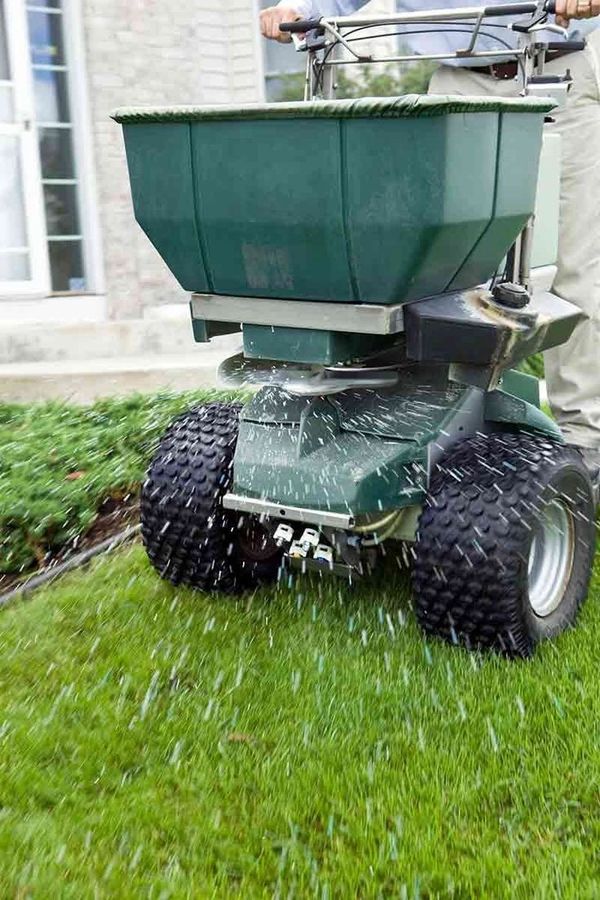Over-Seeding

Overseeding a lawn is the process of spreading additional grass seed over an existing lawn. This is done to fill in thin or bare spots, improve the overall density of the grass, introduce new grass varieties, and rejuvenate the lawn's appearance.

Benafits
- Fills in Thin or Bare Areas: Over time, lawns can develop thin or bare patches due to factors like foot traffic, pet activity, or disease. Overseeding helps fill in these areas, resulting in a denser and more uniform lawn.
- Introduces New Grass Varieties: Over time, certain grass varieties in your lawn may weaken or become more susceptible to pests and diseases. Overseeding with newer, disease-resistant grass varieties can help refresh and rejuvenate the lawn.
- Enhances Drought Resistance: Some newer grass varieties are bred for improved drought tolerance. By overseeding with these varieties, you can make your lawn more resilient during dry spells.
- Improves Disease and Pest Resistance: A healthy, well-established lawn is better equipped to resist common lawn diseases and pests. Overseeding helps strengthen the overall vitality of your lawn, making it more resistant to these issues.
- Promotes a Lush, Green Appearance: A well-maintained lawn with thick, healthy grass blades is more aesthetically pleasing. Overseeding can result in a greener, more vibrant lawn.
- Competition Against Weeds: A dense, well-established lawn created through overseeding leaves fewer spaces for weeds to take root. The healthier grass competes more effectively against weed growth.
- Increases Tolerance to Heavy Use: Lawns that receive a lot of foot traffic, such as those used for recreational activities, can benefit from overseeding. The additional grass helps withstand wear and tear.
- Reduces Soil Erosion: A thick, healthy lawn with well-established roots helps prevent soil erosion, particularly on slopes or areas prone to water runoff.
- Enhances Environmental Benefits: Healthy grass absorbs carbon dioxide, releases oxygen, filters pollutants from rainwater, and provides a habitat for beneficial insects and microorganisms.
- Encourages a Stronger Root System: Overseeding promotes the development of a deeper, more extensive root system. This strengthens the grass's ability to withstand stressors like drought and extreme temperatures.
- Balances out Grass Varieties: Over time, certain grass varieties may dominate, leading to an imbalanced lawn. Overseeding with a diverse mix of grass seed helps create a more balanced and resilient lawn.

Before
- Choose the Right Time: The best time for overseeding is during the early fall or spring when temperatures are moderate and there's adequate moisture. This allows the new grass to establish before extreme weather sets in.
- Prepare the Soil: Loosen the top layer of soil using a rake or a garden fork. This helps create good seed-to-soil contact for better germination.
- Mow the Lawn: Cut the existing grass to a shorter height than usual. This helps the new seeds make better contact with the soil.
- Remove Debris: Clear away any dead grass, leaves, or other debris from the lawn. This ensures that the seeds can reach the soil.

After
- Water Thoroughly: Water the newly seeded areas immediately after overseeding and keep the soil consistently moist until the grass is established. Light, frequent watering is usually best.
- Cover with Mulch (Optional): Applying a thin layer of straw or mulch can help retain moisture, protect seeds from birds, and provide a favorable microclimate for germination.
- Limit Foot Traffic: Avoid walking on newly overseeded areas until the new grass has established, typically within a few weeks.
- Continue Regular Maintenance: Once the new grass is established, resume regular lawn care practices including mowing, watering, and fertilizing.
- Monitor Growth: Keep an eye on the overseeded areas to ensure that the new grass is growing well and filling in the thin or bare spots.
Copyright © 2023 J&M Home Service Solutions - All Rights Reserved.
